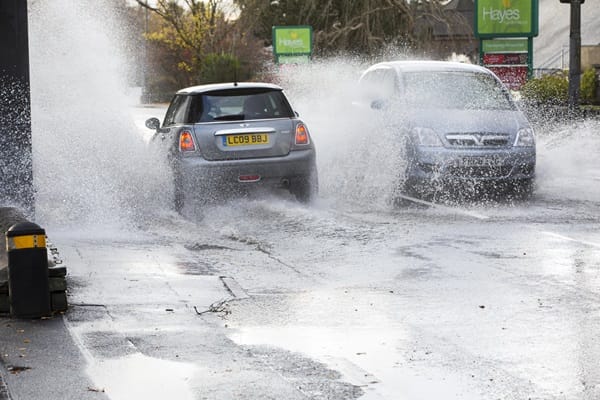Motorists are being urged to take extra safety precautions before heading out on the road in heavy rainfall, strong winds, and snowfall.
Motoring experts at Quotezone.co.uk are urging drivers to ensure their cars are roadworthy in all weather conditions and have researched tips for protecting vehicles during storm season.
With storm warnings announced across the country, Brits are being urged to avoid getting behind the wheel, but for those who need to head out on necessary journeys, it’s crucial to take extra precautions to stay safe on the roads.
A survey revealed a third of drivers admit to not slowing down in wet weather and nearly one in three have driven over the speed limit despite these dangerous conditions.
According to The Highway Code, in wet weather the stopping distances are at least double those required on dry roads because water reduces the grip the tyres have on the road.
This means the distance between cars, which the Highway Code recommends as two seconds in dry conditions, should also be doubled, or even tripled in wet conditions.
This should allow drivers sufficient time to react and come to a full stop if needed without hitting the car in front of them.
If a road is flooded, drivers should turn around and find an alternative route as driving through flood water can lead to loss of control and serious damage to vehicles – which car insurance is unlikely to cover.
Motorists should also be mindful of strong winds and keep a strong grip on the steering wheel at all times to prevent being swayed off course, especially when driving past gaps in trees or buildings where they’re more likely to be exposed to side winds.
It’s also important to ensure vehicles are roadworthy and are able to handle heavy rain and strong winds.
Essential checks include ensuring the tyres have adequate tread depth and are properly inflated, windscreen wipers are fully clearing the screen, brake pads and batteries are fully operational and the correct lights are on and working properly.
It’s illegal not to turn your lights on in bad weather when visibility is poor and drivers could face a 12-month ban and £1000 fine. It’s also important to know which light should be used when the weather starts to deteriorate.
Know Your Lights in bad weather:
- Headlights – when visibility is reduced
- Daytime running lights – activate rear set of lights in poor visibility
- Dipped headlights – in dull daytime weather or heavy rain
- Fog lights – in foggy conditions so drivers can spot you at a distance
Automatic lights – if these come as standard in your vehicle, double check they are activated in bad weather, as they may not come on automatically in certain conditions such as fog
Greg Wilson, car insurance expert and CEO of Quotezone.co.uk said, “With heavy rainfall and strong winds expected across the country, we’re urging drivers to take a proactive approach to safety.
“Before getting behind the wheel it’s crucial to carry out a few checks to ensure your vehicle is in top condition. Checking tyre pressure, tread depth, lights, and wipers can make a significant difference in how your car handles adverse weather.
“Many motorists underestimate the impact of weather on driving conditions and failing to adapt your driving style to the conditions can have serious consequences.
“It’s important to reduce speed, maintain a safe distance from other vehicles and be vigilant for potential hazards like flooding and debris.
“Drivers should also check what type of insurance they have – while most comprehensive car insurance policies cover storm damage, motorists who have taken out third-party only or third-party, fire and theft insurance won’t normally be covered.
“Also, drivers who actively drive through flood water are likely to invalidate their insurance and lose protection for any damage – given it was an avoidable situation, and the driver has a duty to safeguard the vehicle.”






Leave a Comment